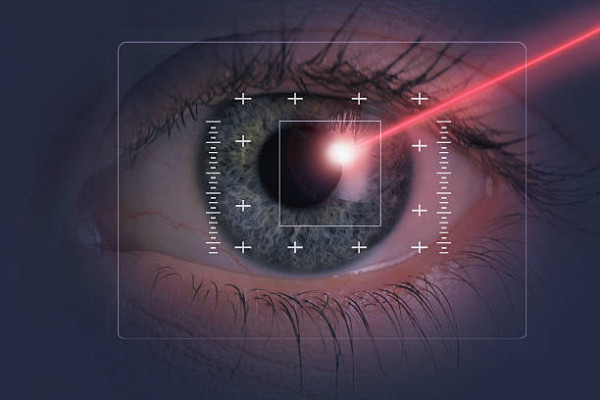Receiving a Keratoconus diagnosis often triggers a cascade of emotions that patients rarely expect. The progressive nature of this corneal condition creates uncertainty about future vision, leaving many people feeling overwhelmed and anxious. Understanding these emotional responses represents the first step toward developing healthy coping mechanisms that support both mental well-being and treatment success.
The journey with Reseda keratoconus treatment extends far beyond clinical appointments and specialized contact lenses. Patients frequently describe feelings of isolation as their vision changes affect daily activities like driving at night or reading small print. These practical limitations can lead to frustration and fear about maintaining independence, particularly among younger patients who worry about career prospects and social relationships.
Many individuals struggle with the unpredictable nature of keratoconus progression, creating persistent anxiety about what tomorrow might bring. This uncertainty can manifest as sleep disturbances, difficulty concentrating at work, or reluctance to engage in previously enjoyed activities. The condition often strikes during teenage years or early adulthood, disrupting educational goals and life plans when people feel most vulnerable to change.
Understanding the Psychological Impact
The emotional toll of keratoconus extends beyond simple vision correction needs. Patients often experience grief similar to other life-changing diagnoses, moving through denial, anger, bargaining, depression, and eventual acceptance. This process takes time and varies significantly between individuals, with some people adapting quickly while others require months or years to fully adjust.
Identity and Self-Image Changes: Living with Keratoconus frequently alters how people perceive themselves and their capabilities. Young adults may question their ability to pursue certain careers, while older patients might worry about becoming burdens to their families. These concerns about self-worth and independence can create lasting psychological effects if left unaddressed through proper support and counseling.
Social situations become sources of stress when vision problems interfere with recognizing faces or navigating unfamiliar environments. Many patients report feeling embarrassed about bumping into objects or missing social cues, leading to gradual withdrawal from group activities and relationships that previously brought joy and connection.
Practical Coping Strategies for Daily Life
Developing effective coping mechanisms helps patients maintain emotional stability while adapting to vision changes. Professional counseling provides valuable tools for processing fears and developing resilience, particularly when therapists understand the specific challenges associated with progressive eye conditions.
Lifestyle Modifications That Support Mental Health: Simple adjustments can significantly reduce daily stress and improve confidence levels. Better lighting in living spaces helps with reading and detailed tasks, while organizing belongings in consistent locations reduces frustration when vision fluctuates. These practical changes create a sense of control over the environment.
Technology offers numerous assistive options that maintain independence and reduce anxiety about vision limitations. Screen readers, magnification software, and smartphone apps designed for low vision users provide backup solutions when traditional vision correction proves insufficient. Learning these tools early builds confidence for future needs.
Building Support Networks and Community Connections
Connecting with others who understand the Keratoconus experience provides invaluable emotional support and practical advice. Online communities and local support groups offer safe spaces to share concerns, celebrate treatment successes, and learn from others who have navigated similar challenges.
Professional Support Team Building: Creating a comprehensive support network includes eye care specialists, mental health professionals, and trusted family members who understand the condition’s impact. Regular communication with this team ensures that both physical and emotional needs receive appropriate attention throughout the treatment journey.
Support groups provide opportunities to learn about new treatment options, share coping strategies, and develop friendships with people who truly understand the daily challenges of living with keratoconus. These connections often prove more valuable than medical treatments alone in maintaining positive mental health outcomes.
Maintaining Hope and Positive Outlook
Treatment advances continue improving outcomes for keratoconus patients, offering genuine reasons for optimism about the future. Corneal cross-linking procedures can halt progression in many cases, while specialized contact lenses provide excellent vision correction for most patients. Understanding these options helps counter fears about inevitable vision loss.
Celebrating Small Victories: Acknowledging progress in adaptation builds resilience and maintains motivation during difficult periods. Successfully completing daily tasks, mastering new assistive technologies, or simply having good vision days deserve recognition as meaningful achievements. These positive moments provide emotional fuel during more challenging times.
Many patients discover unexpected strengths and develop deeper empathy through their keratoconus journey. Some become advocates for vision research or support other patients facing similar diagnoses. This sense of purpose and community contribution often transforms the condition from a purely negative experience into an opportunity for personal growth and meaningful connection.
Conclusion
Managing the emotional aspects of keratoconus requires patience, support, and practical strategies tailored to individual needs. Professional counseling, peer support groups, and family understanding create foundations for healthy adaptation. Technology and lifestyle modifications provide practical tools for maintaining independence and confidence. Remember that emotional healing takes time, just like physical adaptation to new vision correction methods. If you’re struggling with the psychological impact of keratoconus, reach out to qualified mental health professionals who can provide personalized guidance and support during this challenging journey.
Featured Image Source: https://media.gettyimages.com/id/78481521/photo/laser-beam-on-eye.jpg?s=612×612&w=0&k=20&c=U4SOimkCwz07PlJs6dSfe1HH4uGb5LJWkD5txoYCBno=
